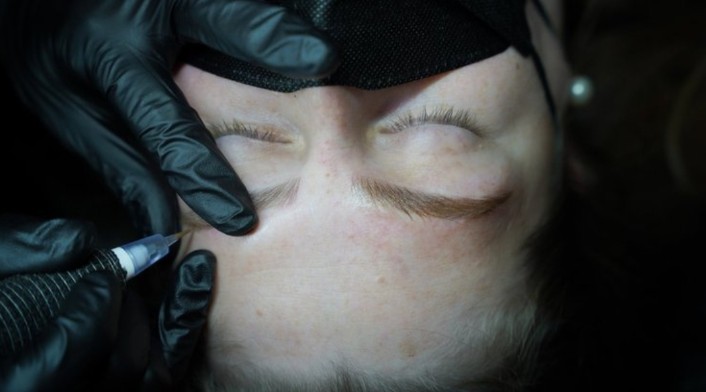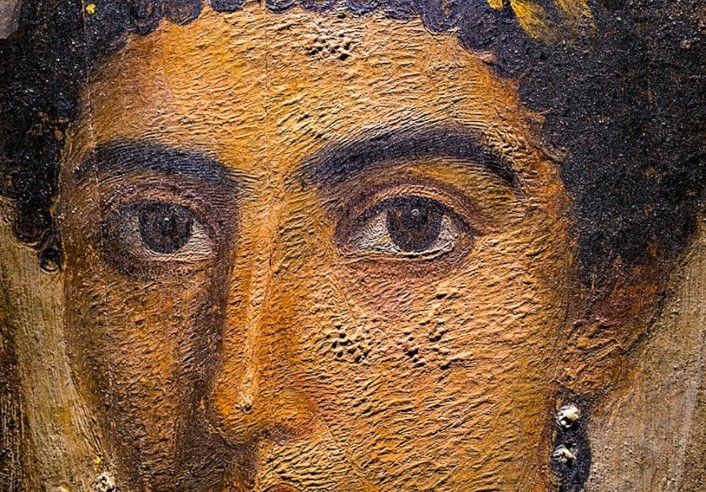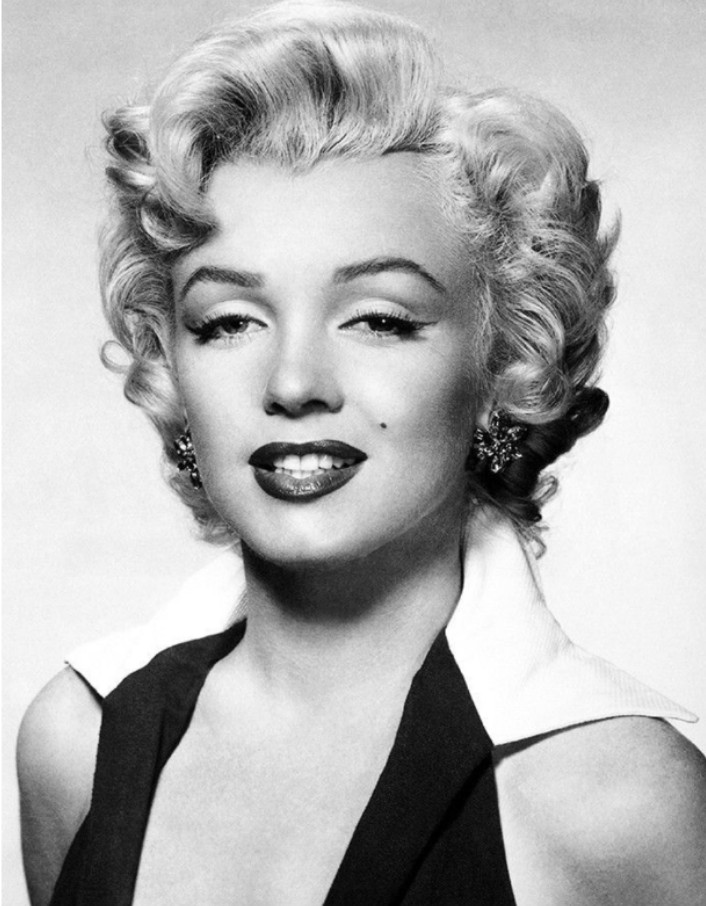
Eyebrow fashion has always played a significant role in defining facial expressions and overall beauty standards. Their shape, thickness, and style have evolved dramatically throughout history, reflecting cultural, social, and fashion trends of different eras. From the barely-there brows of the Renaissance to the bold, bushy brows of today, eyebrow trends have continuously changed, each style reflecting the mood of the times. The latest addition to this evolving trend is microblading—a revolutionary technique that has transformed how we approach eyebrow grooming. Let’s take a journey through the history of eyebrows and explore how microblading fits into the modern beauty landscape.
Ancient Eyebrow Trends: A Symbol of Status and Power

Eyebrows have been a statement of beauty and power for centuries, dating back to ancient civilizations. In Ancient Egypt, bold eyebrows were dark and often enhanced with black kohl not just for aesthetics but also for protection against the sun. Both men and women took part in this trend, viewing brows as an essential part of their look. Egyptian queens like Cleopatra are often depicted with dark, striking eyebrows that framed the eyes, emphasizing their status and allure.
Similarly, in Ancient Greece, eyebrows were seen as a sign of wisdom and beauty. A unibrow was considered a mark of intelligence and purity, so much so that women would use dark powders or even animal hair to create the illusion of connected brows. This trend was a stark contrast to the carefully shaped and defined brows we see today.
The Renaissance and Elizabethan Eras: The High Forehead and Barely-There Brows

Moving into the Renaissance and Elizabethan periods, eyebrows took on a completely different form compared to the rounded eyebrows popularized in the 1920s silent films. The ideal beauty standard shifted towards high foreheads and pale faces, resulting in eyebrows being plucked into almost non-existence or shaved off completely. This look emphasized a serene and noble appearance, with the forehead appearing larger to reflect intellect and class. Queen Elizabeth I epitomized this trend, often appearing with an exaggeratedly high brow line that was nearly hairless.
This era’s eyebrow trend was not about enhancing natural features but rather altering them drastically to fit the artistic ideals of the time. The emphasis was on a smooth, unbroken expanse of skin, and eyebrows were seen as something to be minimized rather than highlighted.
The Early 20th Century: The Rise of Hollywood and the Pencil Thin Brows

The 20th century brought about some of the most dramatic changes in eyebrow styles, heavily influenced by the rise of Hollywood and its movie stars. In the 1920s, silent film actresses like Clara Bow popularized the ultra-thin, dramatically arched brows. Women used tweezers to pluck their eyebrows into thin lines and often drew over them with pencils to achieve a precise, high arch. This look was associated with glamour, drama, and a slightly melancholic expression, reflective of the Jazz Age.
By the 1930s and 1940s, eyebrows remained thin but became more sculpted, with actresses like Marlene Dietrich and Joan Crawford sporting dark, defined brows that were heavily drawn on. This era was all about precision and control, with brows meticulously shaped to convey a polished, glamorous appearance.
The 1950s and 1960s: Natural Brows, Fuller Brows Make a Comeback
The post-war period of the 1950s saw a return to more natural, fuller eyebrows, thanks to icons like Audrey Hepburn and Elizabeth Taylor. These stars showcased fuller, well-groomed brows that were slightly arched, striking a balance between natural beauty and deliberate styling. Hepburn’s thick, straight brows became a defining feature of her classic beauty, inspiring women to embrace a softer, more youthful natural brow shape.
In the 1960s, brows were still kept full but often accompanied by bold makeup looks, like the dramatic eye makeup worn by Twiggy and Sophia Loren. While brows were not as bold as the previous decade, they were groomed to frame the eyes, enhancing the overall makeup look of the time.
The 1970s to 1990s: From Natural to Over-Plucked
The 1970s continued the trend of natural beauty, with eyebrows becoming bushier and less defined. Influenced by the free-spirited counterculture movement, brows were often left to grow naturally, reflecting the era’s relaxed and carefree attitude towards beauty standards. The iconic bohemian look, worn by stars like Ali MacGraw and Jane Birkin, celebrated unplucked, natural brows.
However, the 1990s marked a drastic turn in brow trends. Ultra-thin, over-plucked brows were back in style, popularized by celebrities like Drew Barrymore and Pamela Anderson. Women reached for their tweezers once again, creating pencil-thin arches that defined the decade’s beauty standards. The thin brows of the ‘90s were high maintenance, often resulting in brows that were damaged and struggled to grow back naturally.
The 2000s to 2010s: The Bold Eyebrows Revolution
The early 2000s saw a continuation of the thin brow trend, but by the 2010s, there was a bold backlash. Celebrities like Cara Delevingne and Lily Collins brought thick, bold brows back into the limelight, sparking a major shift in beauty standards. Full, defined, and natural-looking brows became the new ideal, with women around the world seeking ways to enhance their eyebrow game.
Products like brow gels, pencils, and powders became must-haves in the makeup routine, but achieving the perfect brow shape every day was time-consuming and often frustrating. This growing demand for fuller brows led to the rise of microblading, a semi-permanent solution that allowed individuals to have perfectly shaped brows without the daily effort.
Celebrity Influence on Eyebrow Trends
Celebrities have long been a driving force behind eyebrow trends. From Audrey Hepburn’s iconic bold brows to Cara Delevingne’s full and feathery look, stars have consistently influenced the way we shape and style our eyebrows. In recent years, celebrities like Zendaya and Lily Collins have popularized the trend of natural, effortless brows, while others like Kylie Jenner and Kim Kardashian have opted for more dramatic, sculpted looks. The impact of celebrity influence on eyebrow trends cannot be overstated, as fans and followers often seek to emulate their favorite stars’ styles.
Diversity in Eyebrow Trends
Eyebrow trends are not one-size-fits-all, and different cultures and regions have their own unique preferences when it comes to brow style. In Korea, for example, straight and soft eyebrows are often favored, while in the West, high-arched brows are more popular. The diversity in eyebrow trends is a reflection of the diverse beauty standards that exist around the world. Whether you prefer a bold and dramatic look or a natural and effortless style, there’s an eyebrow trend out there to suit your taste and cultural background.
Eyebrow Grooming Techniques
Achieving your desired eyebrow style requires mastering various eyebrow grooming techniques. Eyebrow threading, for example, is an ancient hair removal technique that provides clean, precise lines. Eyebrow waxing, on the other hand, is a quick and efficient method for removing excess brow hair. Microblading, a semi-permanent tattoo technique, creates fuller and more defined brows. Brow gel and pomade can be used to volumize and set brow hairs in place, while brow pencils and powders can be used to fill in sparse areas and add color and definition to the brows.
Microblading: The Modern Solution for Perfect Brows
Microblading is a cosmetic tattooing technique that uses a handheld tool with tiny needles to create hair-like strokes in the eyebrow area. Unlike traditional eyebrow tattoos, which use a machine and penetrate deeper into the skin, microblading deposits pigment closer to the surface, resulting in a more natural appearance. The technique allows for customized shapes and thicknesses, tailored to the individual’s facial structure and preferences.
The process begins with a consultation to determine the desired look, followed by the application of a numbing cream to minimize discomfort during the procedure. The artist then uses the microblading tool to draw individual strokes that mimic the look of natural eyebrow hairs. The result is a set of perfectly shaped brows that can last between 12 to 18 months, depending on skin type and aftercare.
Microblading fits perfectly into today’s beauty landscape, where individuality and low-maintenance beauty solutions are highly valued. It provides a way for those with sparse, uneven, or over-plucked brows to achieve their desired look without the hassle of daily maintenance. For many, microblading has been life-changing, restoring confidence and simplifying their beauty routine.
The Importance of Eyebrow Shape in Eyebrow Style
Eyebrow shape plays a crucial role in determining the overall look and feel of your eyebrow style. Different eyebrow shapes can accentuate or detract from your facial features, and finding the right shape can make all the difference in enhancing your natural beauty. Whether you have a round face, a square face, or a heart-shaped face, there’s an eyebrow shape that can complement your features and add to your overall aesthetic. From pencil-thin brows to bold and full brows, the right eyebrow shape can make or break your look.
The Future of Eyebrow Trends: Embracing Versatility and Personalization
As beauty trends continue to evolve, eyebrows will undoubtedly remain a focal point of personal expression. Microblading has set the stage for more innovations in semi-permanent makeup, reflecting a broader trend towards customization and convenience. Whether thick or thin, bold or understated, the perfect brow is ultimately the one that makes you feel confident and beautiful.
Microblading’s rise demonstrates how far eyebrow trends have come, offering a versatile solution that adapts to changing styles. As we move forward, the emphasis will likely continue to be on brows that complement each individual’s unique beauty, allowing everyone to define their own version of the perfect brow.


